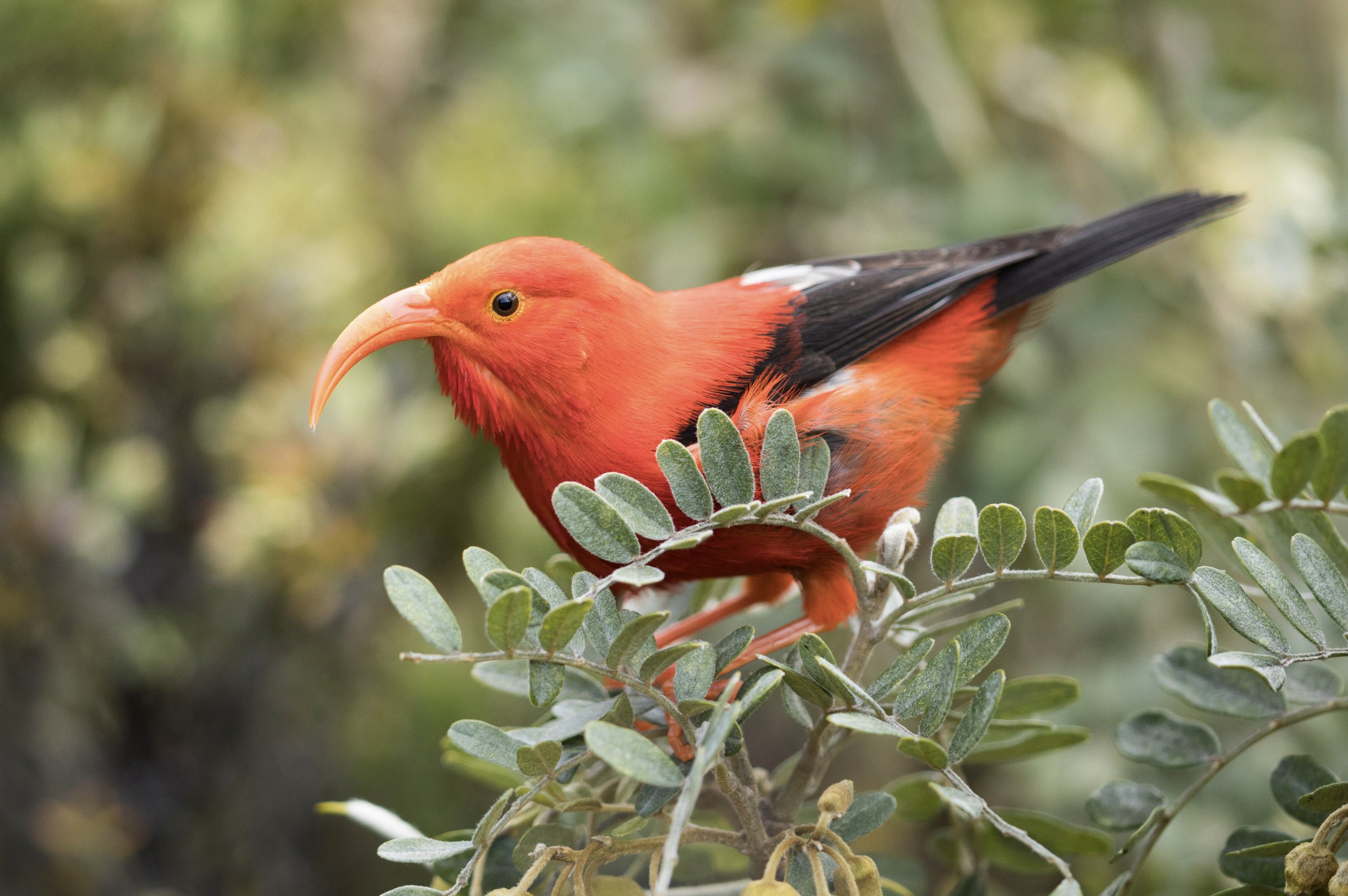
Do you wake up in the morning to birds singing in your yard? Did you know that you’re likely not hearing native birds singing? Native Hawaiian birds used to live everywhere on Maui, from sea to summit. But now they are restricted to high-elevation, native forest areas that protect them from avian malaria, a disease transmitted by non-native mosquitoes that is deadly to our native honeycreepers. In many places across the island, these birds are entirely absent from low and mid-elevations.
Birds from all over the globe were introduced to Hawaii in the last 200 years. As you go about town, sit at the park with your keiki, or tend to your home garden, take time to recognize the birds present. You might see or hear: Northern Cardinals, Chestnut Munia, Common Waxbill, Common Myna, White-rumped Shama, Melodious Laughingthrush, Red-billed Leiothrix, Japanese Bush Warbler, and Warbling White-eye. Because these birds are visible to the public eye, they are often mistaken for being native Hawaiian birds.
Hawaiian honeycreepers, a unique family of birds only found in Hawaiʻi, once included 56 species that evolved to fit diverse ecological niches, similar to the 14 species of Finch that Darwin studied on the Galapagos Islands. Today, there are only 6 species of honeycreepers left on Maui. If you were born in the 1970’s in your lifetime 3 species of honeycreeper on Maui have gone extinct: Maui ‘Akepa, Maui Nukupu’u, and Po’ouli. Hawaiian honeycreepers represent the incredible biodiversity that nurtured Hawaii’s landscapes for as long as 7.2 million years and were some of the first voices echoed on our island landscape. They are the island’s kupuna and worth protecting.
One day we may be able to attract native honeycreepers to your keiki’s backyard garden – but this will take time. Diminishing mosquito-borne diseases are one aspect, but there are also problems to solve due to predation by cats, rats, and mongooses, and habitat destruction. Even though your home yard or garden is unlikely to attract native Hawaiian birds, you can still support native species in your day-to-day life. It could make a significant difference in their survival.
Help our community understand, share, and educate others on these issues.
- Support stringent biosecurity to protect Hawaii’s native species
- Teach keiki to value native species and learn how science can expedite solutions to their problems.
- Start planting native plants so that honeycreepers and native insects will have recognizable food and shelter from sea to summit. Hopefully, they will begin to travel back to lower elevations and find familiar plants to live and feed on in your backyard.
With these actions, hopefully, we can one day enjoy native birds in our yards and gardens again in Hawaiʻi.
Learn more about how you can help native Hawaiian birds at mauiforestbirds.org.



